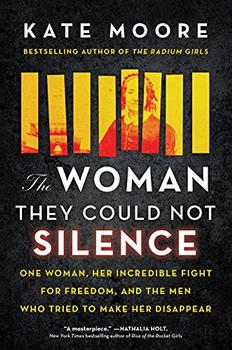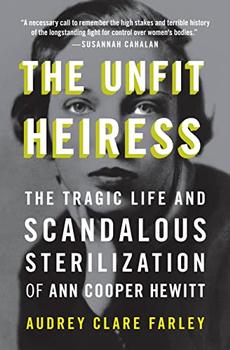Summary | Excerpt | Reading Guide | Discuss | Reviews | Beyond the book | Read-Alikes | Genres & Themes | Author Bio

One Woman, Her Incredible Fight for Freedom, and the Men Who Tried to Make Her Disappear
by Kate MooreFrom the New York Times, USA Today, and Wall Street Journal bestselling author of The Radium Girls comes another dark and dramatic but ultimately uplifting tale of a forgotten woman whose inspirational journey sparked lasting change for women's rights and exposed injustices that still resonate today.
1860: As the clash between the states rolls slowly to a boil, Elizabeth Packard, housewife and mother of six, is facing her own battle. The enemy sits across the table and sleeps in the next room. Her husband of twenty-one years is plotting against her because he feels increasingly threatened―by Elizabeth's intellect, independence, and unwillingness to stifle her own thoughts. So Theophilus makes a plan to put his wife back in her place. One summer morning, he has her committed to an insane asylum.
The horrific conditions inside the Illinois State Hospital in Jacksonville, Illinois, are overseen by Dr. Andrew McFarland, a man who will prove to be even more dangerous to Elizabeth than her traitorous husband. But most disturbing is that Elizabeth is not the only sane woman confined to the institution. There are many rational women on her ward who tell the same story: they've been committed not because they need medical treatment, but to keep them in line―conveniently labeled "crazy" so their voices are ignored.
No one is willing to fight for their freedom and, disenfranchised both by gender and the stigma of their supposed madness, they cannot possibly fight for themselves. But Elizabeth is about to discover that the merit of losing everything is that you then have nothing to lose...
Bestselling author Kate Moore brings her sparkling narrative voice to The Woman They Could Not Silence, an unputdownable story of the forgotten woman who courageously fought for her own freedom―and in so doing freed millions more. Elizabeth's refusal to be silenced and her ceaseless quest for justice not only challenged the medical science of the day, and led to a giant leap forward in human rights, it also showcased the most salutary lesson: sometimes, the greatest heroes we have are those inside ourselves.
Throughout the book, there is a disturbing similarity between the bystanders of Packard's time and those of today, especially pertaining to domestic abuse and harassment of women by men in power. Readers will also be able to locate clear parallels between measures used to certify a woman "insane" in the 1800s and the standards and expectations used against women now regarding appearance, age and intelligence. Today, women are still battling gender-based judgments having to do with body shape and size, signs of aging, make-up use, hairstyles, fashion, etc. While The Woman They Could Not Silence is an account of what happened to Elizabeth Packard in the 1800s, its messaging around equality, empowerment and the dangers of allowing only one group of people to maintain societal control is timely...continued
Full Review
 (783 words)
(783 words)
(Reviewed by Nichole Brazelton).
 As is made clear in Kate Moore's The Woman They Could Not Silence, the laws of coverture were to blame for the abuse, institutionalization and subsequent poverty Elizabeth Packard suffered at the hands of her husband and other men in her community. Brought to North America by English colonizers, "coverture" was a common law that made married women completely dependent on their husbands. The word "coverture" comes from Old French and means "to cover." Under coverture, women were fully "covered" by the legal identity of their husbands. This meant that, once married, a woman effectively no longer existed in the eyes of the law.
As is made clear in Kate Moore's The Woman They Could Not Silence, the laws of coverture were to blame for the abuse, institutionalization and subsequent poverty Elizabeth Packard suffered at the hands of her husband and other men in her community. Brought to North America by English colonizers, "coverture" was a common law that made married women completely dependent on their husbands. The word "coverture" comes from Old French and means "to cover." Under coverture, women were fully "covered" by the legal identity of their husbands. This meant that, once married, a woman effectively no longer existed in the eyes of the law.
The judge William Blackstone provided the first written description of English coverture in 1765, writing, "By...

If you liked The Woman They Could Not Silence, try these:

by Audrey Farley
Published 2023
For readers of The Immortal Life of Henrietta Lacks and The Phantom of Fifth Avenue, a page-turning drama of fortunes, eugenics and women's reproductive rights framed by the sordid court battle between Ann Cooper Hewitt and her socialite mother.

by Amy Sohn
Published 2022
The New York Times–bestselling author Amy Sohn presents a narrative history of Anthony Comstock, anti-vice activist and U.S. Postal Inspector, and the remarkable women who opposed his war on women's rights at the turn of the twentieth century.